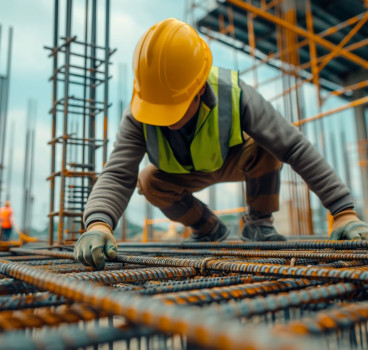The future for roofing as innovation takes centre stage
The integration of technology into roofing systems is beginning to change the way we perceive and use our rooftops. The emergence of smart roofs, equipped with sensors and connected devices that can monitor weather conditions, detect leaks and even assess structural integrity are helping to shape the future – and it’s all looking very exciting, writes John Ridgeway.
The concept of smart roofs marks a significant leap forward in roofing technology, transforming something that keeps out the rain into a dynamic, interactive surface. By incorporating advanced sensors, connectivity and integration with other building systems, smart roofs offer a range of benefits that extend far beyond their traditional function.
One of the most compelling features of smart roofs is their ability to monitor roof conditions in real-time. Embedded sensors can detect changes in temperature, humidity, wind speed and even the presence of moisture or leaks. This data is transmitted to a central system, allowing for early detection of potential problems and proactive maintenance. By identifying issues before they escalate, smart roofs can significantly reduce repair costs and extend the lifespan of the roofing system.
Integrating renewable energy sources, such as solar panels, into the roofing structure further enhances the energy efficiency of buildings, with smart roofs able to optimise energy production by tracking solar radiation and adjusting panel orientation to maximise output. Moreover, they can facilitate energy storage through the integration of battery systems, enabling homeowners or building managers to utilise solar power even during periods of low sunlight or high energy demand.
Enhanced building performance
Beyond energy efficiency, smart roofs are rapidly evolving from passive weather barriers to dynamic building components that contribute significantly to overall building performance and occupant well-being.
One of the most promising applications of smart roof technology lies in its ability to enhance indoor environmental quality (IEQ). By incorporating sensors that monitor air quality parameters such as temperature, humidity, carbon dioxide levels and particulate matter, smart roofs can detect potential issues and trigger appropriate responses.
For example, when pollutant levels rise above acceptable thresholds, the roof system can activate ventilation or air purification systems to improve indoor air quality. This is particularly crucial in urban environments where air pollution is a concern.
Moreover, smart roofs can optimise thermal comfort by regulating building temperature. By integrating insulation and shading systems with weather data, these roofs can adapt to changing conditions, reducing energy consumption for heating and cooling. This not only saves energy but also enhances occupant comfort.
In addition, smart roofs offer several other advantages, such as structural health monitoring, where embedded sensors can detect signs of structural weakness or damage, allowing for early intervention to prevent costly repairs.
Furthermore, integration with security systems, can enable real-time monitoring of roof access and potential intruders. Smart roofs can also generate valuable data on weather patterns, energy consumption and building performance, contributing to urban planning and climate research.
Advanced roofing technologies
In addition, the roofing industry is continuously exploring new materials and techniques to enhance durability and longevity such as self-healing roofs. This might seem like science fiction, but it's a reality that is rapidly approaching. Self-healing roofing materials represent a significant advancement in roofing technology, promising to revolutionise the way we maintain and protect our buildings.
Self-healing roofing materials typically incorporate microcapsules filled with a healing agent. When a crack or puncture occurs, these capsules rupture, releasing the healing agent that seals the damage. This process can happen autonomously, without the need for human intervention.
Researchers are also exploring the use of shape memory polymers in roofing materials. These materials can return to their original shape after being deformed, effectively repairing minor damage. By automatically sealing small damages, self-healing roofs can significantly extend the lifespan of the roofing system, reducing the frequency of costly repairs. In addition, the ability of self-healing roofs to repair themselves eliminates the need for regular inspections and minor repairs, saving homeowners and building owners time and money.
However, while self-healing roofing technology holds immense promise, there are still challenges to overcome. The development of cost-effective and durable self-healing materials is an ongoing area of research. Additionally, the effectiveness of self-healing mechanisms may vary depending on the severity and location of damage.
Despite these challenges, the potential benefits of self-healing roofs are significant. As research and development continue, we can expect to see further advancements in this technology, leading to more resilient and sustainable roofing solutions.
3D printed roofs
However, there is even more to come in the roofing sector. 3D printing technology is rapidly transforming various industries, and the roofing industry is no exception. This cutting-edge approach offers unprecedented design flexibility and efficiency in creating roofing structures.
Unlike traditional roofing methods that rely on standard shapes and materials, 3D printing allows for the creation of highly customised roof designs. Architects and engineers can bring their creative visions to life, crafting intricate and complex roof shapes that seamlessly integrate with the building's overall aesthetic.
3D printing significantly reduces construction time compared to traditional roofing methods. By automating the roofing process, builders can achieve faster project completion and reduce labour costs. Additionally, the ability to print multiple components simultaneously, further enhances efficiency.
While concrete is a common material used for 3D printed roofs, other materials like recycled plastics, bio-based composites and even metal alloys are being explored. This versatility enables the creation of roofs with specific properties, such as insulation, fire resistance, or acoustic performance.
The technology is still in its early stages and large-scale implementation requires further development and refinement. Cost-effectiveness and the availability of suitable materials are also critical factors to consider.
Despite these challenges, the future of 3D printed roofs is bright. As technology advances and costs decrease, we can expect to see wider adoption of this innovative approach, leading to more sustainable, efficient and aesthetically pleasing buildings.
Recycled materials
The construction industry is under increasing pressure to adopt more sustainable practices, and the roofing sector is no exception. Green and blue roofs have been around for some time, but incorporating recycled materials into roofing products is another significant step towards reducing waste and conserving resources – and is gaining traction across the world.
Several types of recycled materials are finding their way into roofing products, such as recycled plastics, which can be transformed into roofing shingles, underlays and insulation. Tyres are another valuable source of recycled rubber, which can be used to produce roofing membranes. Furthermore, scrap metal, including steel and aluminium, can be incorporated into roofing components, providing durability and sustainability.
Modern recycling technologies have advanced to the point where recycled roofing materials can match or even exceed the performance of traditional materials in terms of durability and weather resistance, however, while the use of recycled materials in roofing is growing, there are still challenges to overcome. Ensuring the consistent quality and performance of recycled materials is crucial for widespread adoption. Additionally, developing efficient recycling processes and infrastructure is essential to maximise the benefits of this approach.
While the future of roofing is bright, other challenges remain. Factors such as cost, regulatory hurdles and consumer adoption can influence the pace of innovation. However, the potential benefits of these new technologies, including improved energy efficiency, increased property value and enhanced sustainability, are driving the industry forward.
As roofing technology continues to evolve, collaboration between manufacturers, contractors, and researchers will be crucial. By embracing innovation and addressing challenges head-on, the roofing industry can create a more sustainable and resilient built environment – and it would appear that things look very exciting for the future.
Additional Blogs

What Are Low-Carbon Concrete Options and How Are They Used?
Concrete is a staple product in the construction industry. However, its long-term use has proven just how much it's holding back the sector from minimizing its carbon footprint. You may have heard...
Read moreWhat the UK can learn from global construction tech leaders
The UK construction sector stands at a critical crossroads. Mounting pressures - stagnant productivity, acute labour shortages, tightening safety requirements, ambitious carbon-reduction targets and...
Read more

Are architects losing their influence in the digital era?
For decades, architects have been the central creative force in construction, shaping the buildings we see and the way projects are conceived, communicated and delivered. Their role has been...
Read more